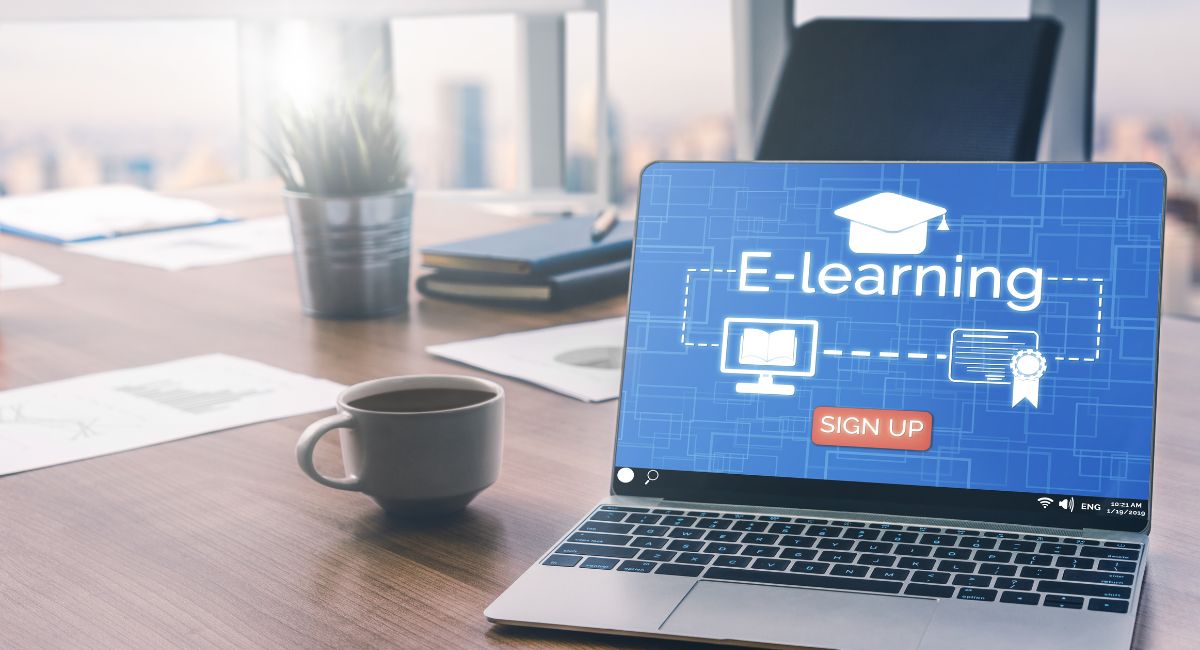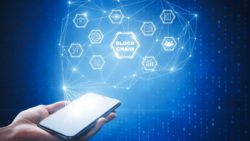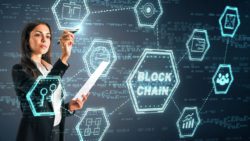Everything You need to know about “Blockchain for Personalised learning”
Blockchain is a revolutionary technology that has gained significant attention and disrupted various industries since its inception. At its core, blockchain is a decentralized and distributed digital ledger that securely records and verifies transactions across multiple computers or nodes. It provides a transparent and immutable record of information, allowing participants to trust the system without relying on intermediaries.
The concept of blockchain was introduced in 2008 by an anonymous person or group of individuals known as Satoshi Nakamoto, who also created the first blockchain-based cryptocurrency, Bitcoin. While Bitcoin is the most well-known application of blockchain, the technology itself has far-reaching potential beyond digital currencies.
A blockchain consists of a series of blocks, where each block contains a collection of transactions. These transactions can represent various types of data, such as financial transactions, asset ownership, identity verification, supply chain information, and more. Each block is cryptographically linked to the previous block through a hash function, creating a chain of blocks. This linkage ensures the integrity and immutability of the data stored in the blockchain.
One of the key features of blockchain is its decentralized nature. Unlike traditional centralized systems where a single entity has control over the data and transactions, a blockchain operates on a peer-to-peer network. This means that every participant in the network, known as a node, has a copy of the entire blockchain. When a new transaction occurs, it is broadcasted to all nodes in the network. The nodes work together to validate the transaction using predefined consensus algorithms, ensuring that it meets certain criteria and is legitimate. Once a consensus is reached, the transaction is added to a new block, which is then added to the blockchain.
The decentralized nature of blockchain provides several advantages. First and foremost, it enhances security. Since the data is stored across multiple nodes, it becomes extremely difficult for an attacker to manipulate or tamper with the information. Additionally, blockchain utilizes cryptographic techniques to secure the data, making it virtually impossible to alter or forge transactions without detection.
Another significant advantage of blockchain is transparency. As all participants have access to the same information, it promotes openness and accountability. Any changes or updates to the blockchain can be seen by all, ensuring trust and reducing the need for intermediaries. This transparency is particularly valuable in industries where trust is essential, such as supply chain management, financial services, and voting systems.
Furthermore, blockchain introduces the concept of smart contracts. Smart contracts are self-executing contracts with predefined rules and conditions encoded into the blockchain. They automatically execute and enforce the terms of the agreement when specific conditions are met. Smart contracts eliminate the need for intermediaries or third parties, reducing costs, improving efficiency, and minimizing the potential for fraud.
Blockchain technology is continuously evolving, and new forms of blockchain are being developed to address different use cases. Some notable examples include public blockchains like Bitcoin and Ethereum, which are open to anyone and have their own native cryptocurrencies. Private blockchains are restricted to a specific group of participants, often within an organization or consortium, and provide more control over the network. Consortium blockchains are a hybrid model where multiple organizations govern the blockchain collectively.
Blockchain is a transformative technology that offers decentralized, secure, transparent, and efficient solutions for a wide range of industries. By eliminating the need for intermediaries and introducing trust through cryptography and consensus algorithms, blockchain has the potential to reshape the way we conduct business, manage digital identities, exchange assets, and interact in the digital world.
My take on the convergence of #AI and #Blockchain from 2017.
AI needs access to a lot of data for training and learning. We can enhance trust and access to data through blockchain overlays, allowing us to securely authenticate and authorise data wherever it is stored.
By…— Gilbert Verdian (@gverdian) June 5, 2023
How does blockchain work?
Blockchain technology operates through a series of interconnected processes and components that work together to enable its functionality. Understanding how blockchain works requires exploring key concepts such as distributed ledger, consensus mechanisms, cryptographic hashing, and network nodes.
1. Distributed Ledger: At the core of blockchain technology is a distributed ledger. This ledger is a continuously growing list of records, known as blocks, that contain transactions, data, or other relevant information. Rather than being stored in a central authority or database, copies of the ledger are maintained across multiple nodes or computers within a network. Each node has a complete copy of the blockchain, ensuring redundancy and resilience.
2. Transactions and Blocks: Transactions represent the fundamental units of data within a blockchain. These transactions can include financial transactions, ownership transfers, contract execution, or any other form of information exchange. Multiple transactions are grouped together into blocks, forming a chronological chain of interconnected blocks.
3. Cryptographic Hashing: Blockchain relies on cryptographic hashing algorithms to ensure the integrity and security of the data stored within each block. A hash function is a mathematical algorithm that takes an input and produces a fixed-size alphanumeric string, known as a hash. Any change in the input data will result in a completely different hash value. In the case of blockchain, the input is the data within a block, and the output hash is stored within the block itself.
#Bitcoin takes 10.6 Gigawatts of Power, which is also 10,600 Megawatts of Power, and converts that Energy into the form of SHA-256 Cryptographic Hashing which secures the network, along with the Proof-Of-Work consensus model so that the Bitcoin mining rigs check eachother to make…
— Dylan Thompson 🟠💊⚡️🧡 (@Dthomp9372) June 5, 2023
4. Block Linkage: Each block in the blockchain contains a reference to the hash of the previous block, forming a chain of blocks. This linkage creates a secure and tamper-resistant structure since modifying the data within a block would alter its hash value, which, in turn, would require changing the hash values of all subsequent blocks. As a result, any attempt to tamper with a block would be easily detectable by other nodes in the network.
5. Consensus Mechanisms: Consensus mechanisms play a crucial role in ensuring that all nodes in the network agree on the state of the blockchain. Since blockchain operates in a decentralized manner, consensus mechanisms enable nodes to collectively validate and agree on the validity of transactions and the order in which they are added to the blockchain. Some common consensus mechanisms include Proof of Work (PoW), Proof of Stake (PoS), and Practical Byzantine Fault Tolerance (PBFT).
6. Validation and Mining: In a PoW-based blockchain, such as Bitcoin, nodes called miners compete to solve complex mathematical puzzles by using their computational power. The first miner to find a solution broadcasts it to the network for validation. Other nodes verify the solution, and if a consensus is reached, the block is added to the blockchain, and the miner is rewarded with cryptocurrency. This process, known as mining, ensures the security of the blockchain by making it computationally expensive to alter the blockchain’s history.
7. Network Nodes: Nodes are the individual computers or devices that participate in the blockchain network. Each node stores a complete copy of the blockchain and maintains a connection with other nodes to exchange data and propagate transactions. Nodes validate transactions, participate in the consensus process, and store the blockchain’s data. They can be divided into different categories such as full nodes (store the entire blockchain), lightweight nodes (store a subset of the blockchain), and mining nodes (perform mining operations).
8. Smart Contracts: Smart contracts are self-executing contracts with predefined rules and conditions encoded directly into the blockchain. They automatically execute when specific conditions are met, without the need for intermediaries. Smart contracts enable decentralized applications (DApps) and facilitate complex transactions and agreements in a secure and transparent manner.
Blockchain technology operates by utilizing a distributed ledger, cryptographic hashing, consensus mechanisms, and network nodes to create a secure, transparent, and tamper-resistant system. Its decentralized nature eliminates the need for intermediaries, enhances security, and offers numerous applications in various industries.
Also read: The Top 10 DApp Browser Platforms In Blockchain Community
How can blockchain be used for personalized learning
Blockchain technology has the potential to revolutionize personalized learning by providing secure and transparent systems for managing educational records, verifying achievements, and tailoring educational experiences to individual learners. Here are some ways in which blockchain can be used for personalized learning:
1. Credentials and Certificates: Blockchain can be utilized to securely store and verify educational credentials and certificates. Learners’ academic achievements, certifications, and skills can be recorded on the blockchain, creating a permanent and tamper-proof record. This allows learners to have control over their own educational data and share it with potential employers or educational institutions, eliminating the need for intermediaries such as traditional credentialing agencies.
2. Competency-Based Learning: Blockchain can enable the implementation of competency-based learning models. Competencies and learning outcomes can be defined and recorded on the blockchain, providing a transparent and immutable record of learners’ achievements. Smart contracts can be used to automatically validate and verify the completion of competencies, enabling learners to progress at their own pace and receive personalized feedback and recommendations.
3. Learning Analytics and Data Tracking: Blockchain can facilitate the collection and analysis of learner data in a secure and privacy-preserving manner. Educational institutions can record learner data, such as learning activities, assessments, and progress, on the blockchain. This data can be used to generate insights and personalized recommendations for learners, helping them identify areas for improvement and tailor their learning path accordingly.
4. Microcredentialing and Badging: Blockchain can support the issuance and verification of microcredentials and digital badges. Microcredentials represent specific skills or achievements and can be stored on the blockchain. Learners can accumulate a collection of microcredentials, which can be shared with employers or educational institutions as a portable and verifiable proof of their skills and knowledge.
5. Personalized Learning Pathways: Blockchain technology can enable the creation of personalized learning pathways for individual learners. By leveraging the transparency and traceability of the blockchain, educational institutions can design customized learning journeys based on learners’ preferences, goals, and previous achievements. Smart contracts can automate the delivery of learning materials, assessments, and personalized feedback, adapting the learning experience to each learner’s specific needs.
6. Peer-to-Peer Learning and Collaboration: Blockchain can facilitate peer-to-peer learning and collaboration among learners. Blockchain-based platforms can connect learners with similar interests or learning goals, allowing them to share resources, collaborate on projects, and provide peer feedback. Smart contracts can ensure fair and transparent distribution of rewards or incentives for participation and contributions.
7. Lifelong Learning and Continuous Education: Blockchain can support lifelong learning and continuous education by providing a lifelong, verifiable learning record. Learners can accumulate their educational achievements and experiences on the blockchain throughout their lives, allowing them to showcase their continuous professional development and adaptability to changing skill requirements.
It’s important to note that while blockchain technology offers promising opportunities for personalized learning, its implementation requires careful consideration of privacy, security, scalability, and interoperability challenges. Additionally, it requires collaboration among educational institutions, technology providers, policymakers, and learners to establish standards, frameworks, and governance models for the responsible and effective use of blockchain in personalized learning environments.
Also read: Blockchain Bridges: Definition, Types, Functions And Risks
Benefits of Blockchain for Personalized Learning
Blockchain technology offers several benefits for personalized learning, enhancing the educational experience and empowering learners. Here are some key advantages of using blockchain in personalized learning:
1. Enhanced Data Security and Privacy: Blockchain provides a decentralized and immutable ledger where educational data can be securely stored. Learners’ personal information, academic records, and achievements are protected through cryptographic techniques, reducing the risk of data breaches and unauthorized access. Learners have control over their data, deciding whom to share it with and for what purposes. This heightened security and privacy foster trust and confidence in personalized learning systems.
2. Transparent and Verified Credentials: Blockchain enables the transparent verification of educational credentials and achievements. By storing educational records on the blockchain, institutions, employers, and other stakeholders can easily verify the authenticity and validity of learners’ achievements without relying on time-consuming manual processes or intermediaries. This streamlines the credentialing process and reduces fraud, ensuring that learners’ qualifications are accurately represented.
3. Portable and Transferable Learning Records: Blockchain facilitates the portability and transferability of educational records. Learners can maintain a lifelong learning record on the blockchain, which can include academic achievements, certifications, microcredentials, and other relevant information. This portable record allows learners to easily share their learning history with prospective employers, educational institutions, or any other entities, promoting seamless transitions and recognition of prior learning.
4. Personalized Learning Pathways: Blockchain technology enables the creation of personalized learning pathways tailored to individual learners’ needs and preferences. By leveraging the transparent and auditable nature of the blockchain, educational institutions can track learners’ progress, achievements, and preferences. This data can be used to deliver personalized content, adaptive learning experiences, and targeted interventions, ensuring that learners receive education aligned with their unique requirements.
5. Empowerment and Ownership of Learning Data: With blockchain, learners have greater ownership and control over their educational data. They can securely store their achievements, competencies, and learning experiences on the blockchain, retaining a permanent and tamper-proof record of their educational journey. This empowers learners to actively manage and showcase their skills, fostering a sense of agency, self-directed learning, and lifelong learning habits.
6. Trust and Verifiability in Peer Assessments: Blockchain can facilitate trustworthy and verifiable peer assessments. When learners collaborate and provide feedback on each other’s work, their evaluations can be recorded on the blockchain. This transparent and tamper-proof record enhances the credibility of peer assessments and incentivizes active participation and constructive feedback within learning communities.
7. Opportunities for Recognition of Informal Learning: Blockchain opens up avenues for recognizing and accrediting informal or experiential learning. By capturing learning experiences, achievements, and skills gained outside of traditional educational institutions, such as through online courses, workshops, or real-world projects, learners can demonstrate their competencies to employers and educational institutions. Blockchain-based microcredentials and badges provide a means to validate and recognize these valuable informal learning experiences.
8. Increased Efficiency and Reduced Administrative Burden: Blockchain streamlines administrative processes in personalized learning environments. Automated verification and validation of credentials, smart contracts for managing learning pathways, and secure sharing of data among stakeholders reduce administrative overhead and manual interventions. This enables educational institutions and educators to focus more on personalized instruction and learner support, optimizing the efficiency of personalized learning programs.
By leveraging the benefits of blockchain technology, personalized learning can become more secure, transparent, efficient, and learner-centric. It empowers learners to take ownership of their education, facilitates the recognition of their achievements, and enables tailored learning experiences that align with their unique needs and goals.
Challenges of Blockchain for Personalized Learning
While blockchain technology offers several benefits for personalized learning, its implementation also comes with certain challenges and considerations. Here are some key challenges associated with using blockchain for personalized learning:
1. Scalability: Blockchain systems face scalability challenges when it comes to handling a large volume of transactions and data. As personalized learning involves a diverse range of learners and their educational activities, the blockchain network may experience performance issues, such as slower transaction processing and increased storage requirements. Achieving scalability while maintaining the decentralized nature of blockchain remains a significant challenge that needs to be addressed.
2. Technical Complexity: Blockchain technology is complex and requires specialized technical knowledge for its implementation and management. Educational institutions and educators may face difficulties in understanding and adopting blockchain-based personalized learning systems. The integration of blockchain with existing educational infrastructure, learning management systems, and data storage systems can be a complex task that requires expertise and careful planning.
3. Interoperability: Interoperability refers to the ability of different blockchain systems and applications to work together seamlessly. In the context of personalized learning, achieving interoperability is crucial for exchanging educational data, credentials, and learning records across various platforms and institutions. However, interoperability standards and protocols for educational blockchain implementations are still in the early stages of development, posing a challenge to the seamless exchange and integration of data.
4. Privacy and Data Protection: While blockchain provides a secure and immutable ledger, ensuring privacy and data protection within a public or consortium blockchain can be challenging. Personalized learning involves collecting and analyzing sensitive learner data. Striking a balance between maintaining privacy and leveraging the benefits of blockchain technology requires careful consideration of privacy-enhancing techniques, data anonymization, consent management, and compliance with data protection regulations such as GDPR (General Data Protection Regulation).
5. Cost and Infrastructure: Implementing blockchain technology can involve significant costs, including the development, deployment, and maintenance of blockchain networks and infrastructure. Educational institutions may require investments in hardware, software, and skilled personnel for managing blockchain systems. Additionally, the energy consumption associated with some consensus mechanisms, such as Proof of Work, raises environmental concerns and cost considerations.
6. User Experience and Adoption: Blockchain-based personalized learning systems should prioritize user experience and ensure a seamless and intuitive interface for learners, educators, and administrators. Ensuring user-friendly interfaces, integration with existing educational platforms, and providing adequate support and training for stakeholders are crucial for promoting adoption and acceptance of blockchain in personalized learning environments.
7. Legal and Regulatory Frameworks: Blockchain implementation in personalized learning needs to comply with existing legal and regulatory frameworks. Issues such as intellectual property rights, data ownership, liability, and compliance with educational regulations should be addressed to ensure that blockchain-based personalized learning systems adhere to legal requirements and protect the rights of all stakeholders.
8. Governance and Standards: The development of governance models and standards for blockchain-based personalized learning is an ongoing challenge. Establishing frameworks for data governance, consensus mechanisms, identity management, and dispute resolution is essential for building trust, ensuring ethical practices, and fostering collaboration among educational institutions, learners, and other stakeholders.
Addressing these challenges requires collaboration between educational institutions, technology providers, policymakers, and researchers. Continuous research, experimentation, and refinement of blockchain solutions, along with the establishment of industry-wide standards and best practices, will contribute to overcoming these obstacles and realizing the full potential of blockchain for personalized learning.
Also read: How Blockchain Is Transforming Real Estate Transactions: Top 5 Challenges It Is Facing
Future of Blockchain for Personalized learning
The future of blockchain for personalized learning holds great potential for transforming the education landscape. As the technology continues to evolve and mature, several developments are expected to shape its future in personalized learning:
1. Improved Scalability: Scalability remains a critical area of focus for blockchain technology. Innovations such as sharding, layer-two solutions, and advancements in consensus algorithms (e.g., Proof of Stake) are being explored to address scalability challenges. These improvements will enable blockchain networks to handle a larger volume of transactions and data, making them more suitable for personalized learning environments with diverse learners and extensive educational activities.
2. Enhanced Interoperability: Efforts are underway to establish interoperability standards and protocols for blockchain systems in education. Interoperability will facilitate seamless data exchange and integration across different blockchain platforms, educational institutions, and learning management systems. This will enable learners to have a unified and comprehensive record of their educational achievements, regardless of the platform or institution they engage with.
3. Blockchain-based Learning Ecosystems: The future of personalized learning may witness the emergence of blockchain-based learning ecosystems. These ecosystems will bring together educational institutions, learners, employers, content providers, and other stakeholders in a decentralized and transparent network. Blockchain will serve as the foundation for secure data exchange, credential verification, personalized recommendations, and collaboration within the ecosystem.
4. Integration with Emerging Technologies: Blockchain can synergize with other emerging technologies to enhance personalized learning experiences. Integration with artificial intelligence (AI) and machine learning (ML) can enable more sophisticated and intelligent adaptive learning systems. Blockchain can provide the underlying infrastructure for secure and transparent AI-driven recommendation systems, personalized content delivery, and learning analytics.
5. Gamification and Incentives: Blockchain can play a significant role in gamifying personalized learning experiences. By leveraging blockchain-based tokens or cryptocurrencies, learners can earn rewards and incentives for their achievements, contributions, and participation in educational activities. These rewards can be exchanged within the learning ecosystem or even in the wider economy, fostering learner motivation, engagement, and continuous learning.
6. Learning Analytics and Insights: Blockchain can enable more sophisticated and comprehensive learning analytics and insights. By securely recording and analyzing learner data, blockchain-based systems can generate personalized recommendations, identify learning patterns, and offer insights into learners’ strengths and weaknesses. These insights can inform the design of adaptive learning pathways, interventions, and instructional strategies tailored to individual learners’ needs.
7. Blockchain-based Microcredentials: The future of personalized learning may witness the widespread adoption of blockchain-based microcredentials. These microcredentials, stored on the blockchain, will serve as a flexible and verifiable proof of specific skills or achievements. Learners can accumulate a collection of microcredentials from various educational providers, online courses, and real-world experiences. These portable credentials can enhance employability, facilitate career advancement, and encourage lifelong learning.
8. Peer-to-Peer Learning and Collaboration: Blockchain technology can foster peer-to-peer learning and collaboration on a global scale. Learners can connect and collaborate with peers across geographical boundaries, share resources, provide feedback, and engage in joint projects. Blockchain-based systems can facilitate trust, transparency, and accountability in peer interactions, enabling learners to benefit from diverse perspectives and collective knowledge.
9. Ethical and Transparent AI: With the integration of AI and blockchain, the future of personalized learning can prioritize ethical and transparent AI systems. Blockchain’s transparency and auditability can help ensure that AI algorithms used in personalized learning are fair, unbiased, and accountable. This can mitigate concerns related to algorithmic bias and promote the ethical use of AI in educational decision-making.
10. Adoption of Blockchain Standards: As blockchain technology evolves, the development and adoption of industry-wide standards for educational blockchain implementations will become increasingly important. These standards will ensure interoperability, data privacy, security, and compliance with educational regulations. Collaboration among educational institutions, policymakers, industry
organizations, and technology providers will be crucial in shaping these standards.
While the future of blockchain for personalized learning holds significant promise, it is important to address the associated challenges and ensure responsible and ethical deployment. Continued research, pilot projects, and collaborative efforts will pave the way for a future where blockchain-based personalized learning systems offer enhanced educational opportunities, learner empowerment, and lifelong learning support.
Also read: Why Blockchain Will Change The Future Of Internet?
Top 10 Ways Blockchain is Revolutionizing Personalized Learning
Blockchain is a distributed ledger technology that has the potential to revolutionize many industries, including education. By providing a secure and transparent way to track student progress, blockchain can help educators deliver personalized learning experiences that are tailored to each student’s individual needs.
Here are 10 ways blockchain is revolutionizing personalized learning:
Secure and transparent student records: Blockchain can be used to securely store student records, including grades, attendance, and assessments. This data can be easily accessed by authorized users, such as teachers, parents, and administrators. Blockchain also makes it difficult to tamper with student records, which can help to ensure the accuracy of student data.
Personalized learning experiences: Blockchain can be used to create personalized learning experiences for students. By tracking student progress and preferences, blockchain can help educators identify areas where students need additional support and provide them with the resources they need to succeed.
Improved communication between stakeholders: Blockchain can be used to improve communication between stakeholders in the education system, such as teachers, parents, and administrators. This can help to ensure that all stakeholders are on the same page and working together to support student learning.
Reduced costs: Blockchain can help to reduce the costs of education by eliminating the need for paper-based records and by streamlining administrative processes.
Increased accountability: Blockchain can help to increase accountability in education by providing a transparent and auditable record of student progress. This can help to ensure that students are receiving the education they need and that educators are held accountable for their results.
Improved access to education: Blockchain can help to improve access to education by making it easier for students to learn from anywhere in the world. This can be done by providing students with access to online courses, assessments, and other learning resources.
Empowerment of students: Blockchain can empower students by giving them control over their own learning. Students can use blockchain to track their progress, manage their learning goals, and earn badges and other recognition for their accomplishments.
Collaboration between students: Blockchain can help students collaborate with each other on learning projects. This can be done by creating shared ledgers where students can store their work and by using smart contracts to track the progress of projects.
Innovation in education: Blockchain is a new technology, and there are many ways that it can be used to innovate in education. For example, blockchain can be used to create new forms of assessment, develop new learning models, and create new educational experiences.
Global reach: Blockchain is a global technology, and it can be used to deliver education to students all over the world. This can help to close the achievement gap and provide students with access to high-quality education, regardless of their location.
Overall, blockchain has the potential to revolutionize personalized learning by making it more secure, transparent, efficient, and accessible. As the technology continues to develop, we can expect to see even more innovative ways that blockchain can be used to improve education.
Stay informed with daily updates from Blockchain Magazine on Google News. Click here to follow us and mark as favorite: [Blockchain Magazine on Google News].
Get Blockchain Insights In Inbox
Stay ahead of the curve with expert analysis and market updates.
latest from tech
Disclaimer: Any post shared by a third-party agency are sponsored and Blockchain Magazine has no views on any such posts. The views and opinions expressed in this post are those of the clients and do not necessarily reflect the official policy or position of Blockchain Magazine. The information provided in this post is for informational purposes only and should not be considered as financial, investment, or professional advice. Blockchain Magazine does not endorse or promote any specific products, services, or companies mentioned in this posts. Readers are encouraged to conduct their own research and consult with a qualified professional before making any financial decisions.

 Bitcoin
Bitcoin  Ethereum
Ethereum  Tether
Tether  Solana
Solana  XRP
XRP  Dogecoin
Dogecoin  USDC
USDC  Lido Staked Ether
Lido Staked Ether  Cardano
Cardano  TRON
TRON  Shiba Inu
Shiba Inu  Avalanche
Avalanche  Toncoin
Toncoin  Wrapped Bitcoin
Wrapped Bitcoin  Wrapped stETH
Wrapped stETH  Sui
Sui  Chainlink
Chainlink  WETH
WETH  Bitcoin Cash
Bitcoin Cash  Polkadot
Polkadot  Pepe
Pepe  LEO Token
LEO Token  Stellar
Stellar  NEAR Protocol
NEAR Protocol  Aptos
Aptos  Litecoin
Litecoin  Wrapped eETH
Wrapped eETH  Uniswap
Uniswap  USDS
USDS  Cronos
Cronos  Hedera
Hedera  Internet Computer
Internet Computer  Render
Render  Bonk
Bonk  Ethereum Classic
Ethereum Classic  POL (ex-MATIC)
POL (ex-MATIC)  MANTRA
MANTRA  Bittensor
Bittensor  Ethena USDe
Ethena USDe  WhiteBIT Coin
WhiteBIT Coin  Artificial Superintelligence Alliance
Artificial Superintelligence Alliance  Dai
Dai  dogwifhat
dogwifhat  Monero
Monero  Arbitrum
Arbitrum  Stacks
Stacks  Filecoin
Filecoin  OKB
OKB 








